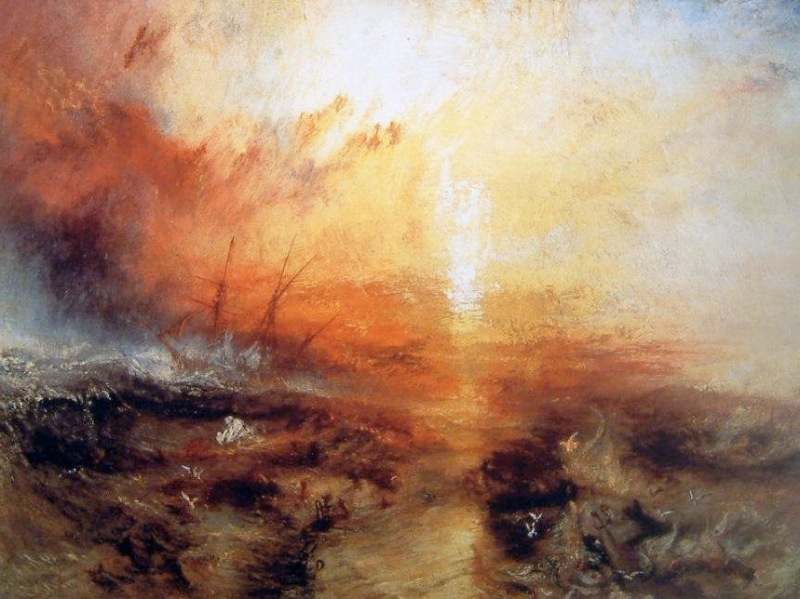JMW TURNER
THEY'RE not quite on Airforce One but a collection of British paintings are en route to Australia on a journey equivalent in secrecy to that of a visit by a US president.
The Tate Britain gallery has now shipped up to 100 paintings and sketches of the renowned British artist Joseph Mallord William Turner in a huge operation, shrouded in secrecy and security.
Like the US president and his vice president and senior Congress members, the paintings could not travel together for fear of international theft, hijack or a plane crash which would rob the world of the invaluable pre-impressionist collection.
So instead they have been flown in batches to Australia under security escort to be hung firstly at the Art Gallery of South Australia before a major exhibition at the National Gallery of Australia in Canberra.

J.M.W. Turner, Rome, from the Vatican. Raffaelle, Accompanied by La Fornarina, Preparing his Pictures for the Decoration of the Loggia, exhibited 1820. Photo: (c) Tate, 2013.
Many of the sketch books and the paintings produced from them have never left Britain or indeed travelled to Australia.
''This is one of the greatest Turner collections on the planet and he is probably regarded as Britain greatest artists, one of the world great landscape artists,'' Australian High Commissioner to the UK Mike Rann said yesterday.

A painting engraved by W. Holl, A portrait of artistJoseph Mallord William Turner, published 1859-61. Photo: (c) Tate, 2013.
''For years people have talked about 'wouldn't it be great if we had a blockbuster Turner exhibition from the Tate' so it's been two-and-a-half years in the making. I think it is going to be terrific for Canberra because it is the centenary of Canberra and I think it is going to terrific because it coincides with Adelaide's first ever annual festival of the arts.''
The High Commissioner met with Tate Director Sir Nicholas Serota to discuss the finer points of the collection and their nine-month visit to Australia with their first public outing on February 8.
According to Tate's eminent Turner scholar Ian Warrell, Turner (1775-1851) was Tate's most sought after masters in the world for travel but it couldn't happen often because the expectation of the British public was to be able to see them at home.

J.M.W. Turner painting, Britain, 1775-1851, Scarborough town and castle: morning: boys catching crabs, c.1810, London, watercolour on paper, 68.5 x 101.5 cm
''They've never been lent to Australia before we don't tend to lend them because they are so valuable generally because of the information in them but also in terms of insurance costs they tend to be quite high,'' Warrell said.
Highlight of the show
One of the highlights of the Turner exhibition will be his work on a convict ship that sank off the coast of France, bound for Botany Bay in NSW.

J.M.W. Turner, Venice, Moonrise, exhibited 1840.
The work was not seen until after his death, found abandoned in his studio for reasons unknown.
After his death in 1851, the National Gallery in Britain gave the artwork the focal point of which depicts women and children clutching onto a raft after a shipwreck during a violent storm the generic title ''Fire at Sea'' but more than a century later art historians identified it as depicting the loss of the Amphitrite carrying 125 female and children convicts to NSW in September 1833.
The ship ran aground off the Port of Boulogne in the Channel en route to Sydney but rather than accept an offer of help from the French to evacuate the ship, its captain refused saying his cargo could only step off on Australian soil and he would wait until the tide returned to sail off.

J.M.W. Turner's painting Peace Burial at Sea, exhibited 1842. Photo: (c) Tate, 2013.
Instead a storm struck and 150 lives mostly women and children drowned.
Only three people made it ashore, one of whom later died.
The scandal made huge news in its day particularly with the drowning of the 12 young child prisoners and received wide coverage on mainland Europe where Turner was based at the time.

J.M.W. Turner's painting Regulus, 1828, reworked 1837. Photo: (c) Tate, 2013
It would have been impossible to escape the news.
A recommendation has now been made to the Tate that the artwork title, which became Disaster at Sea in recent decades, be changed to ''The Wrecked Female Convict Ship, the Amphitrite: Women and Children Abandoned in a Gale'', a long style often favoured by Turner to explain or supplement his images.
The Australian exhibition also brings together those Turner works that reside in Australia including the Art Gallery of NSW, National Gallery of Victoria and the Art Gallery of South Australia; the latter gallery having the beautifully rich ''Scarborough town and castle: morning: boys catching crabs'' (c.1810).

J.M.W. Turner's Venice, the Bridge of Sighs painting, exhibited 1840.

